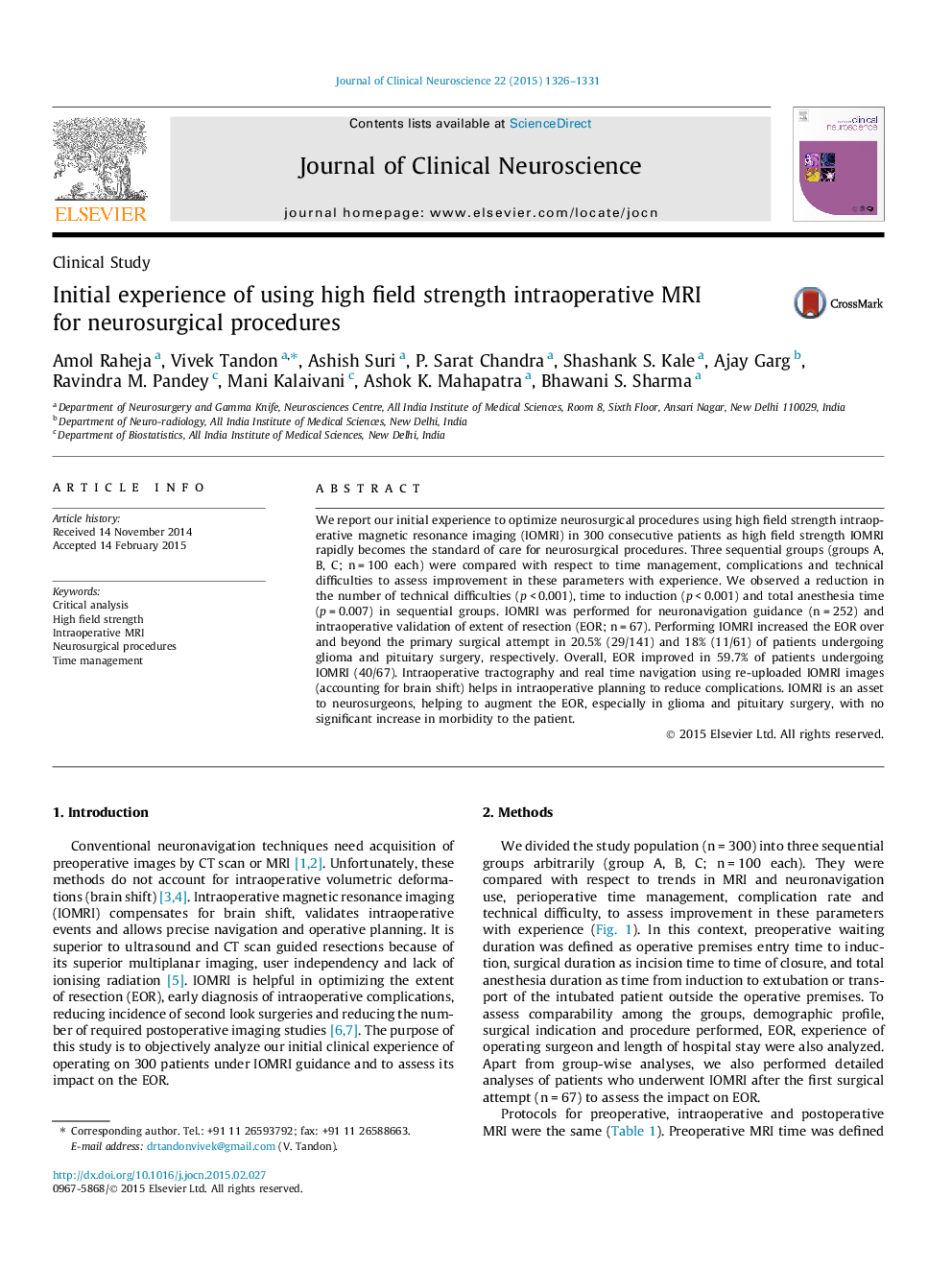| Article ID | Journal | Published Year | Pages | File Type |
|---|---|---|---|---|
| 3058872 | Journal of Clinical Neuroscience | 2015 | 6 Pages |
We report our initial experience to optimize neurosurgical procedures using high field strength intraoperative magnetic resonance imaging (IOMRI) in 300 consecutive patients as high field strength IOMRI rapidly becomes the standard of care for neurosurgical procedures. Three sequential groups (groups A, B, C; n = 100 each) were compared with respect to time management, complications and technical difficulties to assess improvement in these parameters with experience. We observed a reduction in the number of technical difficulties (p < 0.001), time to induction (p < 0.001) and total anesthesia time (p = 0.007) in sequential groups. IOMRI was performed for neuronavigation guidance (n = 252) and intraoperative validation of extent of resection (EOR; n = 67). Performing IOMRI increased the EOR over and beyond the primary surgical attempt in 20.5% (29/141) and 18% (11/61) of patients undergoing glioma and pituitary surgery, respectively. Overall, EOR improved in 59.7% of patients undergoing IOMRI (40/67). Intraoperative tractography and real time navigation using re-uploaded IOMRI images (accounting for brain shift) helps in intraoperative planning to reduce complications. IOMRI is an asset to neurosurgeons, helping to augment the EOR, especially in glioma and pituitary surgery, with no significant increase in morbidity to the patient.
